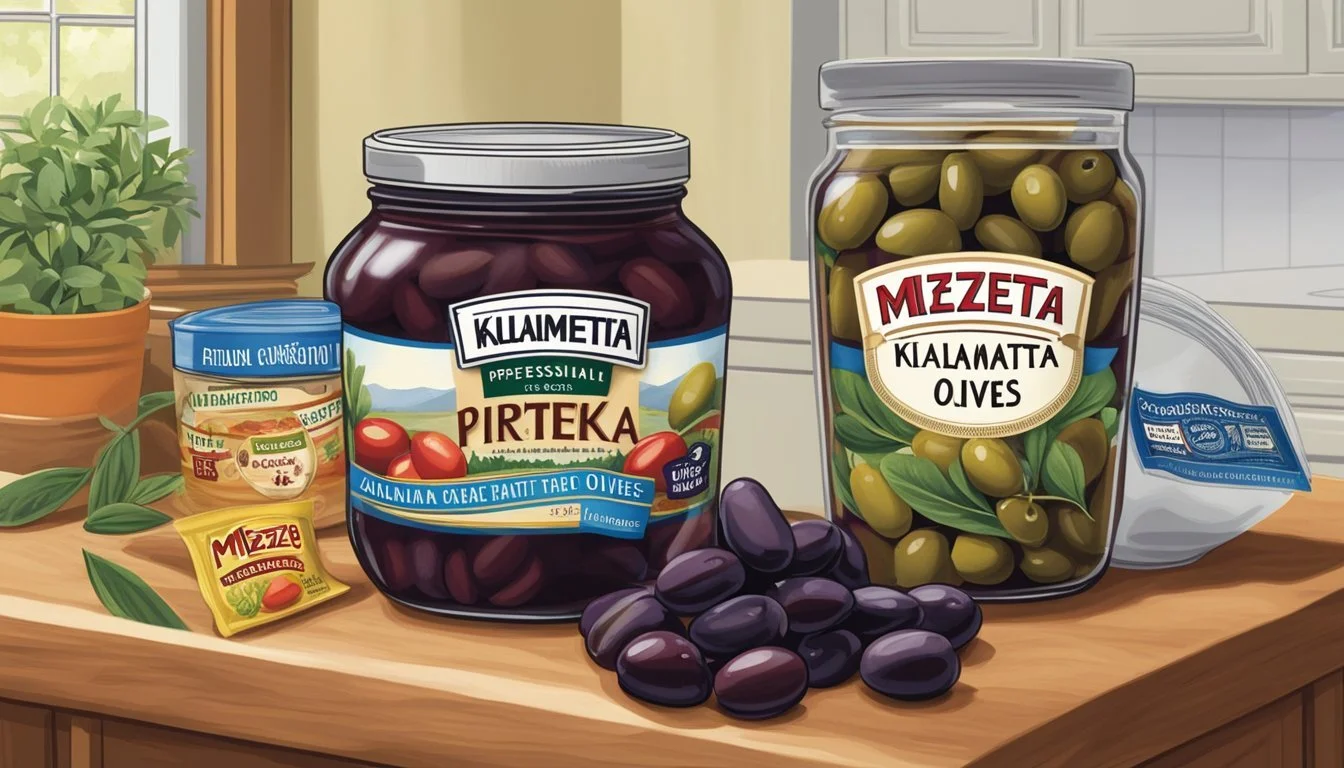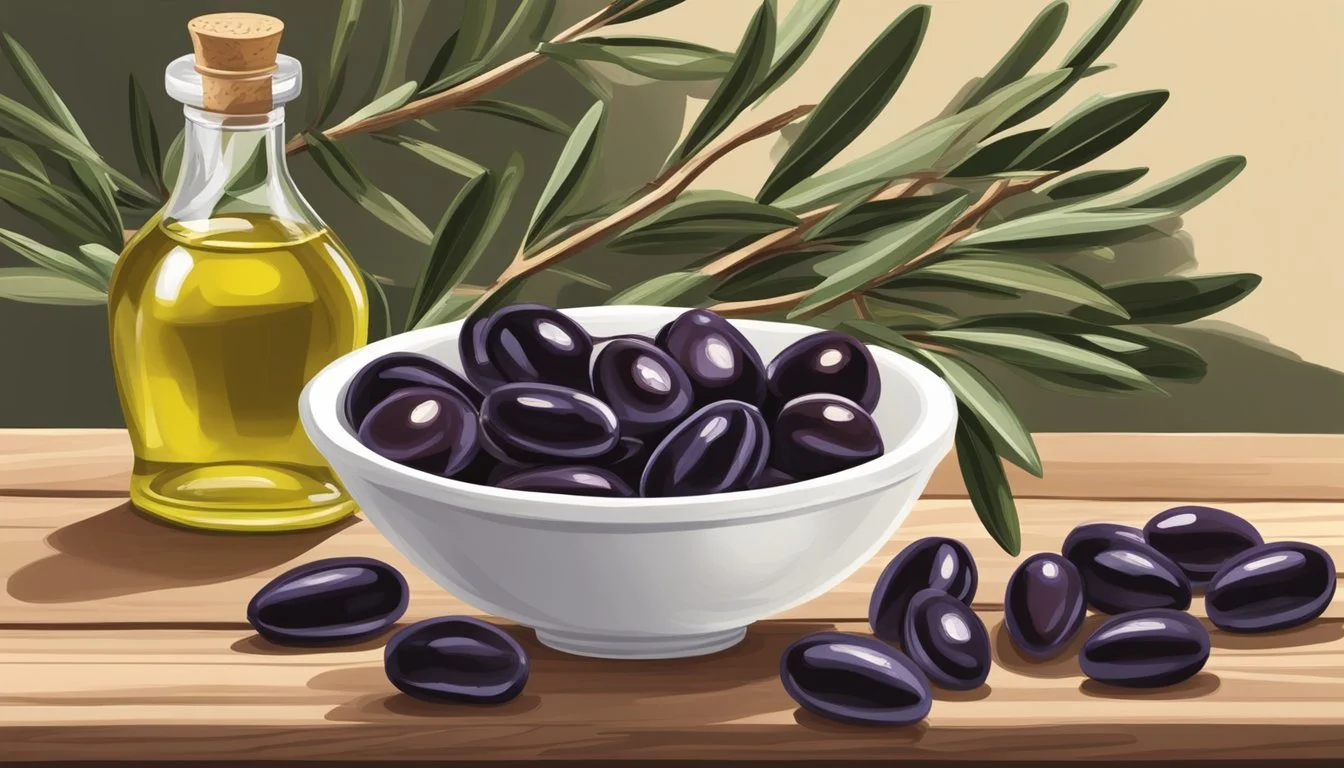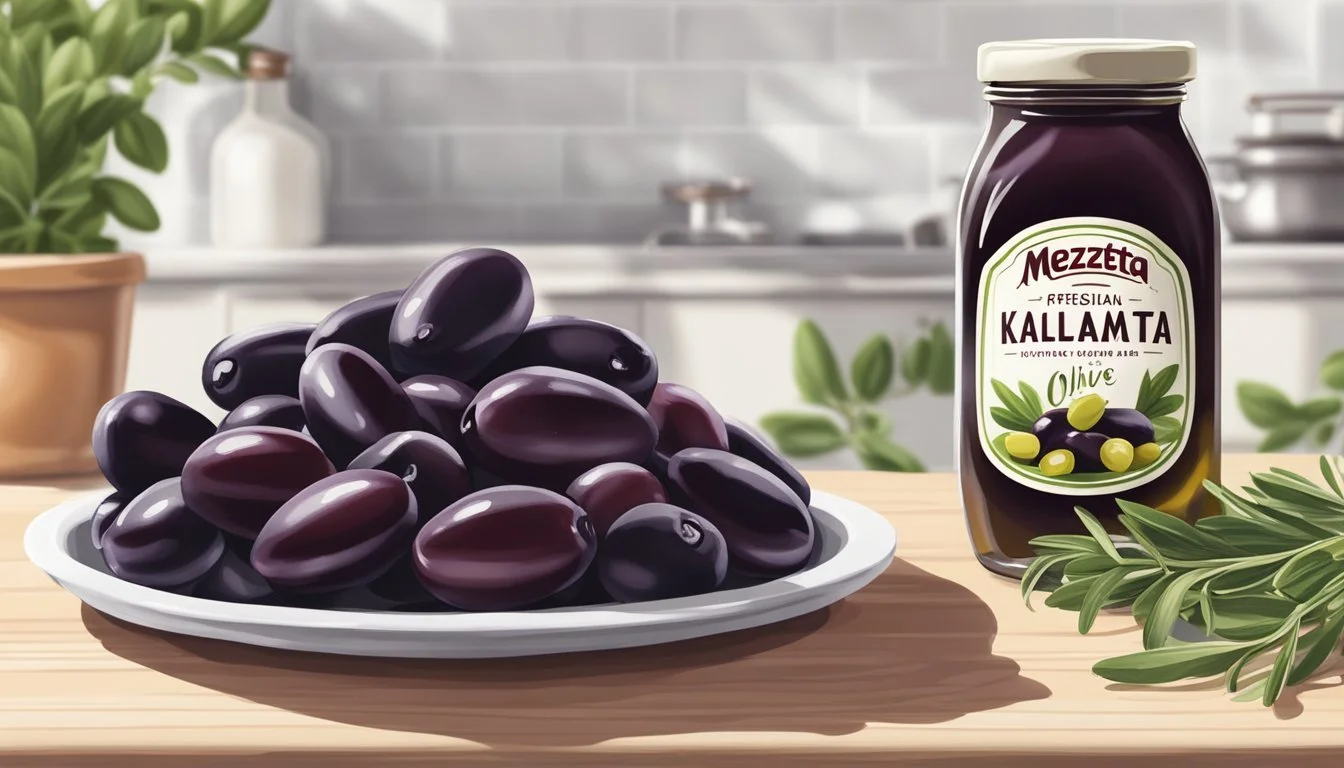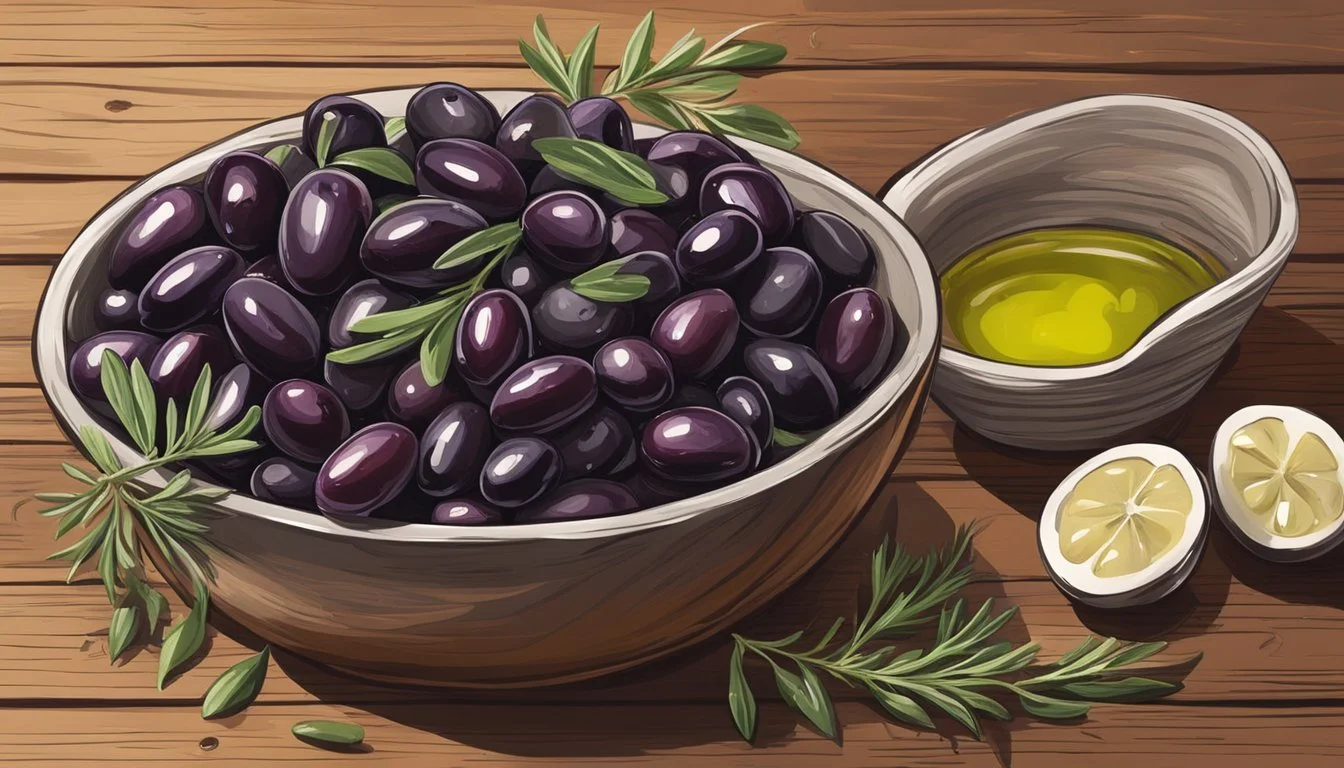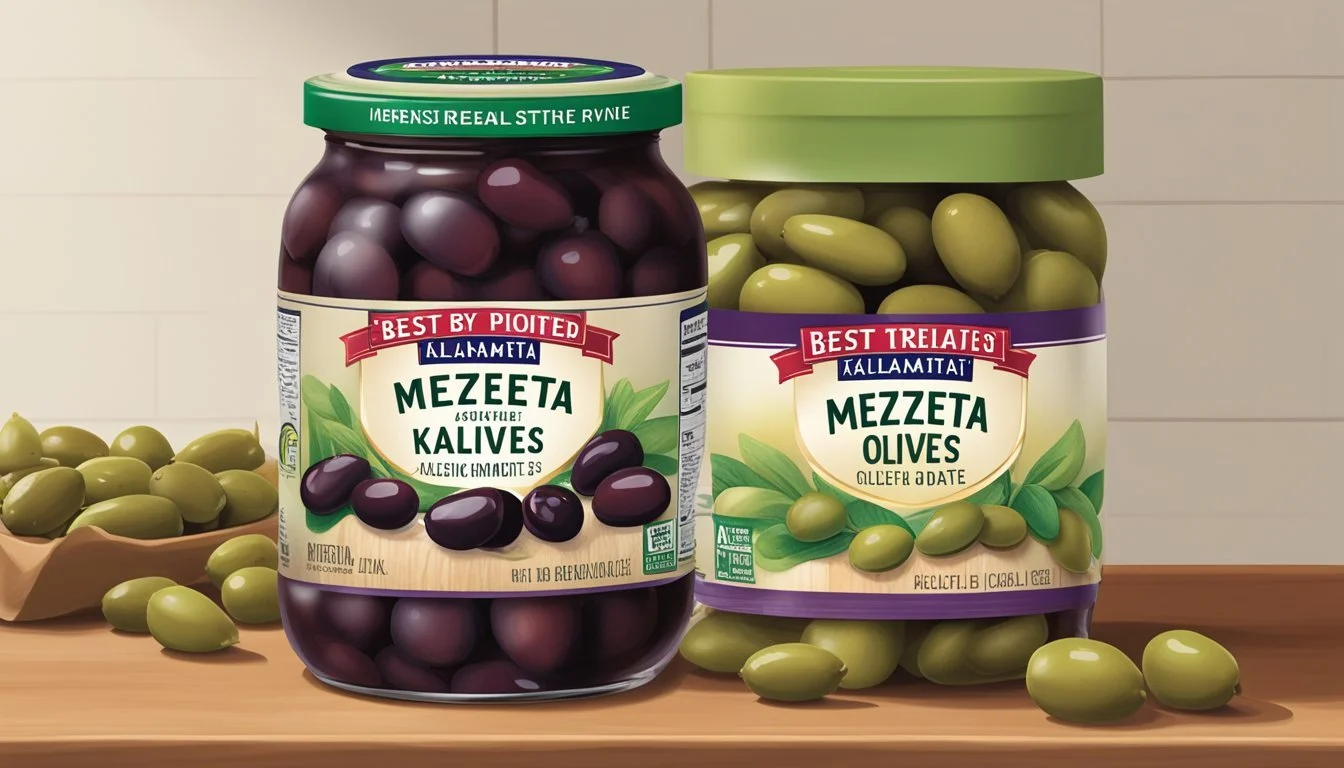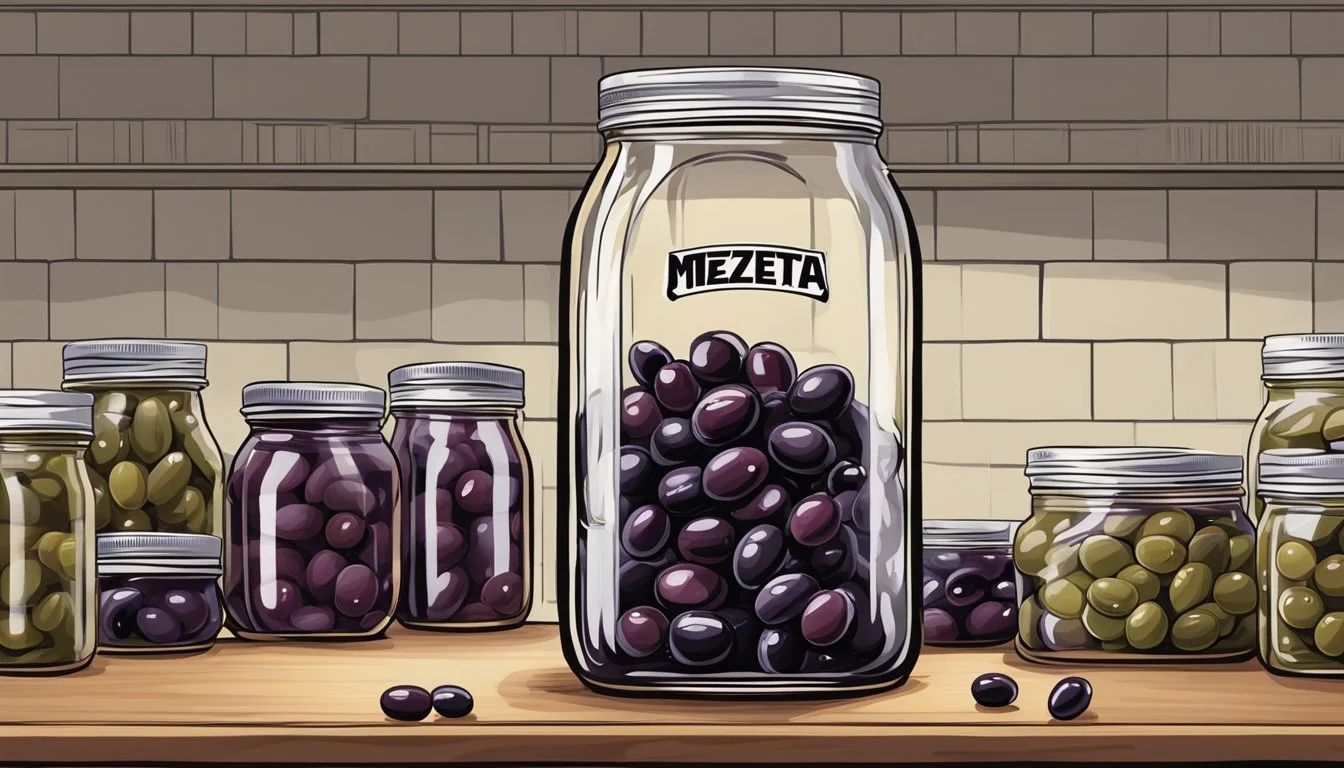How Long Does Mezzetta Pitted Greek Kalamata Olives Last?
Shelf Life Explained
Understanding the shelf life of Mezzetta Pitted Greek Kalamata Olives (What wine goes well with olives?) is essential for consumers who wish to enjoy the rich flavor and tender texture of these prized Mediterranean delights at their best. Packaged in jars for convenience, these olives are not only a staple in Greek cuisine but have also gained a significant place in pantries around the world as a versatile ingredient and snack.
Mezzetta, a brand known for delivering quality gourmet products, ensures that its Kalamata Olives are of the highest standard. Once opened, the olives should be kept refrigerated to preserve their freshness. While the jar itself may have a best before date, this is typically a marker of peak quality rather than an expiration date, and so the olives can often be safe to consume beyond this point if they have been stored correctly.
The longevity of olives also depends on whether the product is liquid-packed or dry. Mezzetta's olives in brine can last for an extended period under proper refrigeration, usually remaining edible for 1 to 3 weeks after opening. It is important to monitor the smell, appearance, and taste of the olives, as any noticeable changes could be signs of spoilage. Therefore, for those eager to make the most of these Kalamata Olives, timely consumption is recommended for the best sensory experience.
Understanding the Shelf Life of Olives
Proper understanding of the shelf life of olives is essential to ensure optimal freshness and safety. The shelf life varies significantly based on whether the olives are sealed or have been opened.
Olives in a Sealed Jar
Shelf Life: Sealed jars of Mezzetta Pitted Greek Kalamata Olives typically have a lengthy shelf life due to the preserving nature of the brining process. Unopened jars can last up to two years when stored under appropriate conditions.
Storage Conditions: To maximize longevity, olives should be kept in a cool, dry area, away from direct light and sources of heat.
Best Before Date: While a best before date is indicated on the packaging, it often serves as a quality indicator rather than a strict expiration date.
After Opening the Jar
Once the jar of olives is opened, the shelf life diminishes considerably.
Shelf Life: Mezzetta Pitted Greek Kalamata Olives, when stored properly, can last for 1 to 3 weeks in the refrigerator once opened.
Storage Conditions:
The jar should be tightly sealed during storage.
Olives should remain submerged in their original brine to maintain freshness.
It is crucial to keep an eye on the smell, appearance, and taste of the olives for any signs of spoilage after opening. If the olives develop an off odor, discolored appearance, or unusual flavor, they should be discarded.
Assessing the Quality of Olives
When determining the quality of Mezzetta Pitted Greek Kalamata Olives, one should examine their appearance, smell and texture, and conduct taste tests to ensure freshness and avoid spoilage.
Appearance
One can assess the quality of Mezzetta Kalamata Olives by noting the color and presence of mold. Fresh olives typically have a deep purple hue, consistent with their natural coloring. If the olives deviate significantly from this color, losing their vibrancy, or if there is visible mold growth, this may indicate spoilage.
Smell and Texture
Olives should have a characteristic briny smell with a hint of olive fruitiness; any off-odors can signal spoilage. Their texture is also a telltale sign. A quality olive is firm to the touch and not overly soft or mushy. A break in the texture, such as an unexpected softness, may suggest that the olives are past their prime.
Taste Tests
Lastly, a taste test can serve as the final quality check. Olives should taste rich and salty, though not overpoweringly so. If one detects any sourness or an off-flavor that is not typically ascribed to Kalamata olives, it may be a sign that the olives should no longer be consumed.
Optimal Storage Conditions
Proper storage is vital for maintaining the freshness and taste of Mezzetta Pitted Greek Kalamata Olives. Below are specific conditions that should be met before and after the jar is opened.
Before Opening
Mezzetta Pitted Greek Kalamata Olives in an unopened jar should be stored in a cool, dry place away from direct heat and sunlight to prevent deterioration. The ideal temperature for storage is at or below room temperature (68°F/20°C), which is typically met by a pantry or a cupboard.
Location: Pantry or cupboard
Conditions: Cool, dry, and dark
Temperature: At or below room temperature
Once Opened
Once the seal is broken, olives should be kept refrigerated in their original brine in an airtight container to minimize oxidation and spoilage. They should be consumed within a few months for optimal taste and safety.
Location: Refrigerator
Container: Airtight
Temperature: 40°F (4°C) or below
Shelf Life: Up to 2 months for best quality
Maintaining these storage conditions ensures that Mezzetta Pitted Greek Kalamata Olives retain their distinct flavor and texture.
Maximizing Olive Freshness
To ensure Mezzetta Pitted Greek Kalamata Olives maintain their quality, proper storage is crucial. The freshness of olives hinges on keeping them submerged in the appropriate liquid and using the right kind of container.
Keeping Olives Submerged
For Mezzetta pitted Greek kalamata olives to stay fresh, one should always keep them submerged in brine. This saline solution acts as a natural preservative, inhibiting the growth of bacteria. Once the jar is opened, it’s important to ensure that the olives are fully covered by the brine. If necessary, one can top up the jar with a solution of salt and water mixed in the same proportion as the original brine.
Tip: Check the brine level regularly and add more if the olives are exposed to air.
Choosing the Right Container
After opening, transferring Mezzetta olives into an appropriate container can prolong their freshness. The ideal container should have a tight-fitting lid to prevent air and contaminants from getting in. While the original jar is often suitable, if a transfer is needed, glass or plastic containers can be used provided they are food-safe and clean.
Glass is preferred: It doesn’t impart flavors and is less permeable to air.
If using plastic: Ensure it's a non-reactive grade suitable for acidic foods.
It's essential to secure the lid firmly after each use to maintain the olive quality.
Health and Nutritional Aspects
The health and nutritional aspects of Mezzetta Pitted Greek Kalamata Olives are notable for their balance of fat and nutrients. They offer benefits that extend beyond basic nutrition, provided they are consumed in moderate amounts and as part of a balanced diet.
Benefits of Kalamata Olives
Kalamata olives are rich in monounsaturated fats, which are known to be heart-healthy. They can contribute to a reduced risk of cardiovascular disease when incorporated into a regular diet. The presence of antioxidants in Kalamata olives helps defend against oxidative stress and may play a role in preventing chronic diseases. For those following a low-carb diet, these olives are also a suitable option due to their low carbohydrate content.
Monounsaturated fats: May help lower the risk of heart disease.
Antioxidants: Protect cells from oxidative damage.
Low-carb: Suitable for low-carbohydrate diets.
Ingredients and Food Safety
Mezzetta Pitted Greek Kalamata Olives contain natural ingredients, with sea salt being used as a key seasoning. They are a gluten-free option, making them accessible to those with gluten-related disorders or who choose to avoid gluten.
Natural ingredients: Promotes cleaner eating habits.
Sea salt: Used for seasoning, preserving the authentic Mediterranean flavor.
Gluten-free: Safe for individuals with gluten intolerance or celiac disease.
Regarding food safety, Mezzetta's processing and packaging methods are designed to ensure the olives are safe for consumption. Proper storage and adherence to use-by dates will help maintain the quality and safety of the product.
Creative Uses of Kalamata Olives
Pitted Greek Kalamata olives offer a dynamic range of culinary applications due to their rich flavor and succulent texture. They can enhance a variety of dishes or serve as the base for delectable homemade stuffed olives.
Incorporation in Recipes
Kalamata olives are versatile ingredients that can transform simple dishes into gourmet experiences. Their distinct briny and slightly smoky flavor profile is an asset in Mediterranean cuisine.
Pasta: Tossing chopped Kalamata olives into pasta dishes complements tomato-based sauces and can be paired with ingredients such as garlic, capers, (What wine goes well with capers?) and anchovies (What wine goes well with anchovies?) for a Puttanesca sauce.
Pizza: Scatter sliced olives atop a classic Margherita or a vegetarian pizza to add depth of flavor and a hint of Mediterranean zest.
Recipe Example: For a quick pasta dish, one might sauté garlic and chili flakes, add tomatoes and chopped Kalamata olives, and finish with a garnish of parsley and grated Parmesan cheese.
Homemade Stuffed Olives
The pitted variant of Kalamata olives presents an opportunity for creating custom stuffed olives.
Steps for Stuffing Olives:
Selection: Choose quality pitted Kalamata olives.
Filling: Decide on fillings such as garlic, almonds, blue cheese, or citrus zest.
Stuffing: Carefully insert the chosen filling into the cavity of each olive.
Cocktail Application: Stuffed olives can be used to garnish martinis or other cocktails, adding a gourmet touch to drinks with their savory stuffed fillings.
Understanding Olive Packaging
To ensure freshness and longevity, the type of packaging and label details on olive products are crucial factors that one needs to consider.
Packaging Types
Mezzetta Pitted Greek Kalamata Olives typically come in glass jars, which are crucial for preserving the quality of the olives. These jars can keep the olives immersed in a liquid such as water, brine, or oil, shielding them from external factors that can hasten spoilage. The presence of liquid is essential as it helps maintain the olives' moisture and flavor. It’s important for consumers to understand that once the seal of the jar is broken, the storage method will change.
Label Information
The label on Mezzetta jars provides essential information such as best-before dates and storage instructions post-opening. It's important to follow these details to extend the olives' useful life. For instance, some labels may suggest consuming the olives within a specific time frame upon opening:
Finish the jar within 1-2 weeks after opening.
If refrigeration is required, consume within the timeframe suggested by the manufacturer.
Manufacturers clearly indicate these specifics on the label to help maintain product quality and safety.
Tips for Storing Olives Long-Term
When looking to maintain the best quality of Mezzetta Pitted Greek Kalamata Olives over an extended period, proper food storage practices are critical. Below are tried-and-tested methods for ensuring the longevity of olives.
Refrigeration:
Place olives in an airtight container to minimize exposure to air.
Ensure that olives are submerged in their original brine, which acts as a natural preservative.
Spread olives on a baking sheet lined with parchment paper.
Freeze until solid to avoid clumping.
Transfer to a freezer bag, removing excess air before sealing.
Label bag with the date of freezing.
Storage Environment:
Store in a cool, dark place away from direct light and heat sources.
Inconsistent temperatures can lead to spoilage, so a stable environment is essential.
By following these methods, one can extend the shelf life of olives. It is worth noting that while freezing can prolong the storage time up to six months, texture changes might occur, making them more suitable for cooked dishes rather than fresh consumption once thawed.
Signs of Olive Spoilage
When assessing whether opened Mezzetta pitted Greek Kalamata olives have spoiled, it’s important to be aware of specific indicators. Spoilage can occur despite proper storage in the refrigerator after opening. Below are signs to look out for:
Odor: Fresh olives have a distinct, tangy scent. If olives emit an off or sour smell, this is a clear indicator that they have spoiled.
Appearance: Keep an eye out for visible mold, which usually presents as fuzzy green or black spots. Also, discoloration that deviates from the natural deep purple hue suggests spoilage.
Texture: Olives should have a firm, slightly yielding texture. If they feel excessively soft, slimy, or mushy to the touch, this can be a sign they are no longer fit for consumption.
Taste: Although it's best to avoid tasting questionable olives, a sour or unpleasant flavor can confirm spoilage.
Below is a quick reference guide for assessing olive spoilage:
Indicator Fresh Quality Spoiled Quality Odor Tangy Off or sour Appearance Deep purple, no mold Discoloration, mold spots Texture Firm, slightly yielding Soft, slimy, mushy Taste Rich, olive flavor Sour, unpleasant
Consumers should discard olives if they exhibit any of the above spoilage signs, to avoid potential foodborne illness. When in doubt, it is safer to err on the side of caution and not consume the olives.

